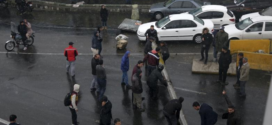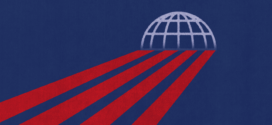 ‘According to S. Sakac and many orientalists and archaeologists the word ‘Croat’ is derived from the name of an Iranian or Persian tribe known as the Harahvati.
‘According to S. Sakac and many orientalists and archaeologists the word ‘Croat’ is derived from the name of an Iranian or Persian tribe known as the Harahvati.
Today the Croats call themselves “Hrvati” in their own language. The word “Harahvati” appears in Iranian inscriptions from the time of Darius the Great (521-485 B.C.). That monarch divided his empire into twenty-odd satrapies or provinces. One of these was called “Harauutis”. During the administration of Xerxes this name changed to “Haravatis.” Still another variation, “Harouvatis”, appears on a map of lands subject to the Achaemenid kings of old Iran. This province occupied the district of Helm and the surrounding area in the vicinity of Kandahar in modern Afghanistan. The name “Harahvati” appears in Darius’ “List of Peoples”, and the Greek commentators of the Alexandrian epoch referred to them also.
In the Persian Annals
Carvings in the Persian royal palaces excavated at Persepolis show the Harahvatis leading camels and bearing gifts to offer to the King of Kings. For a long time, however, the etymological connection between “Hrvati” (Croats) and “Haralivati” or “Haravati” was over looked because the Greeks and Macedonians, after Alexander the Great’s conquest of the Persian empire in 333 B.C., changed the name of the province of Harahvati to the Greek form, Arachosia. Thus for more than two thousand years the original appellation was forgotten.
In Croatian literature and folklore
There are old Croatian customs and national poems that have been cited as evidencing lingering traces of the fire and sun worship of the Iranians. Fire, the essence of human origin, the sun, and the great boiling cauldron around which the warriors spring in the age old kolo or circle dance, all these are ingredients in the national lore of the Croatian nation. The Croat vilas or fairy witches resemble the peris of Iranian mythology.
Then there is the legendary Sviato zov, the personification of strength, a being almost too huge for the earth to bear. He is strongly reminiscent of the “elephant-bodied” Rustum of Persian legend. Of course there is nothing especially unique in resemblances of this nature appearing in the folklore of apparently unrelated peoples. Perhaps even more suggestive of a possible Asiatic origin is the distinction between Croatian horse harness and that of the western peoples. Also the fire-producing apparatus used by the Croats throughout the ages, the whips and staffs carried by the herdsmen, and the embroidery of the caps and shawls sometimes worn by the Croat women \definitely shows an Asiatic inspiration in the opinion of many art critics and experts. Obviously, however, the Croats could have copied Avar or Magyar modes in these connections. Partisans of the Iranic theory of Croatian origins nonetheless are able to cite additional indications of similarity between these two geographically separated groups.
Commercial Organization
The Croatian historian, Luka Jelic, has identified certain elements in the old commercial organization of Dalmatia as being of indubitable Persian origin. Jelic believes also that it was the Alans who contributed the Iranian touch that such art authorities as Professor J. Strzygowski have noted in early Croat artistic forms. Strzygowski has called attention to the striking similarity that exists between Persian architecture and ornamentation of the Sassanid period (225 A.D.-641 A.D.) and the earliest known work of the Croats in these fields of expression.
Zoroastrian and Iranian Religious Elements
Ivo Pilar and Joseph Peisker both have argued that the Croats brought with them to Dalmatia elements of the Zoroastrian religion of Iran, or of even older Iranic faiths. On the other hand a number of amateur historians, such as Archbishop Bohusz-Szestrencewicz in the last century, considered that a great many ancient peoples origin ally had the same language and religion as those of the Medes and the Persians.
The emphasis placed by the Slavs upon farming activities he explained in terms of the religious injunctions of Zoroaster to cultivate agriculture. Unquestionably there is a tinge of dualism in the old Slavic religion and it is not impossible that this represents a heritage from Zoroastrian dualism. In early times the Croatian god of light was Vid, while Crnobog, the god of darkness, was represen tative of the principle of evil. The parallel with the Iranian god of light, Ahura-Mazda, the personification of good, and his rival, Ahri man, god of darkness, is striking. That old treatise, L’Abrege des Merveilles relates that some of the Slavs (does this statement refer actually to the Croats particularly?) followed the religion of the Magians (priests of Zoroaster) and adored the sun and fire. It mentions also a nation living between theSlavs and the Franks which worshipped the planets. This nation was very intelligent and skilled in the art of war which it conducted against the Slavs and the “Turks”. The latter reference must be to the Magyars, and it is noteworthy that Hungarian national legends preserve a vague memory of contact with the Alans, and that the linguistic history of the Hungarian nation contains evidence of Alan or other Caucasian influences. When it is recalled that the present day descendants of the Alans in the Caucasus, the Ossets or Osseten, still call themselves Iron(Parthians), the role of the Alans as the transmitters of Iranian influences and traditions of various kinds seems plausible. For instance L’Abrege declares that this “nation living between the Slavs and the Franks” held seven feasts annually to correspond with the number of the planets and that the most splendid celebration was that of the sun. It has to be recollected in this connection that the number seven was of special occult significance in Iranian thinking.
Linguistics and Vocabulary
There are some words in the Croatian language that undoubtedly are of Iranian origin, but the same may be said for most of the Slavic anguages. After all the Iranians were related to all the Indo-Euro ean peoples who spread over western Asia and Europe and it would be remarkable if there were not linguistic similarities to be found here and there. It is peculiar, however, that the title of “ban” was used among no other European people save the Croats. This word is found in the same form and with the same accent in Persian. Further more it possesses the same significance in the two languages, “grand seigneur”, “great lord”, “supreme commander”, “patron”.
At the seventh international congress of Byzantine studies in Brussels in 1948 the Abbé Marin Tadin also called attention to the fact that the Croat word Zupan appears to be of Babylonian origin. It is true that the Serbs among other Slavs use this term also, but they probably picked it up from the Croats originally.
Etymologists believe, too, that the names of some of the Croat nobles in very early times, such as Momir, Vonomir, and Jezdimir are identical with the forms Möes, Vonon, and Jezda, discovered in the annals of the Iranians. Tadin considers that the Croat word “mir” is a derivative of the Iranian “mihr” which relates to Mithra “lord”. If his theory is correct the suffix “mir”, which appears in so many Croat names, signified originally “siegneur” or “lord” instead of the Slavic meaning “peace”. Tadin also holds that the Croat names for the days of the week and the months of the year convey their exact meaning only in terms of the Zoroastrian philosophy of ancient Iran. It is certainly true that the names of some of the earliest known Croat chiefs, such as Varda and Pervaviega, are typically Iranian, and that the name of one of the seven or eight original great Croat tribes, Jamomet, also appears to be of Iranian origin. Even in the Carpathian area today there are names that seem to be derived from old Persian and it is more than likely that the Croats on their march southwards left splinter groups behind them who applied these Iranian names to the districts in which they lived.
Symbolic Colors of Cardinal Directions
There is another piquant circumstance that needs to be mentioned. When the Croats settled on the Adriatic those who lived north of the Cetina river were known as White Croats, while those dwelling between the Neretva and Lake Skutari in Albania were called Red Croats. It was the Iranian custom to designate cardinal points by colors. White stood for the west, and of course the Croats north of the Cetina were the westernmost of all the Croats. Red to the Iranians meant south or southern. The use of colors to indicate directions is not found among the Slavs save where they may have been influenced by Croat examples.
Similarities of Social Structure
Striking analogies between the social structure and culture of the Croats in early times and those of the ancient Iranians can be cited too. There is no doubt that the Croats differed radically in these respects from the Slavs with whom their name has been associated traditionally. Until well into the medieval era the organization of the Croats was tribal in character, and the denomination of social units and the functioning of these units is remarkably like that of the Iranian tribal organization of the seventh century BCE.
When the Croats arrived in the Adriatic lands they were a society of warrior and shepherd families. They were cattle herders rather than agriculturists, unlike the Slavs. Basically they were warriors, although there unquestionably were Slavic agriculturist elements subject to them. The social formation was that of the tribe having as its basic subdivision the large communal family or bratsvo. This family group had as its center the kuca or dom. From the latter stems the term domena, which is similar to the Persian demana meaning house. Specialists in the social history of Iran seven centuries before Christ know that the center of the Iranian family group at this epoch was the demana. Absolute master of this demana was the dengpaitis. In like manner there reigned over the Croatian domena in early times the gospodar or domacin. Perhaps this word can best be translated in general terms as “head”. While the authority of the Croat domacin was by no means so extensive as that of the dengpaitis among the early Iranians, the fact remains that right down to Tito’s day the father’s power in Croat peasant families has remained exceptional by western standards.
The prince’s household in seventh century Iran was organized on the same model as that of the ordinary family group. This princely household was known as the vis. Its master was the visopaitis. The Croat social organization was such that the relationship of the family community to the household of its chief corresponded to that of the Iranian family groups within the vis. Some etymologists think that this word vis is the ancestor of the Croat word yes which used to mean a territory inhabited by several family communities forming a bratsvo or fraternity. A parallel can be drawn, too, between the Croat word, zupa, and the Iranian term, zantav. The latter meant a district ruled by a chief called the zantupaitis whose jurisdiction was most extensive. Some of the Croat Zhupan, or chief of the zupe (plural of zupa), possessed the same competence as the zantupaitis. Among both the Iranians and the Croats a definite clan or tribe had its own zantav or zupa.
Similarities in Lifestyle and material culture
The conclusion cannot be avoided that the early Croat society of warriors and herdsmen bore a much closer resemblance to that of the Iranians, and the Ural-Altaic peoples, whose formation was similar to the one found in Iran, than it did to the Slavic agriculturist groups. In this connection the predominance of horsemen among the early Croats is worth more than passing notice. Constantine Porphyrogenitus himself was impressed by the high ratio of mounted to foot soldiers in the tenth century Croat armies. It is thought by some authorities that the mounted element in the Croat national forces in the time of her national kings represented the descendants of the Iranian ancestors of the Croatians, while the infantry were of Slavic descent. However that may be ancient Croat tombs bear mute witness to the equestrian past of this nation. Besides curved sabers, the sign of nobility, there are found regularly in such tombs many appurtenances of the early Croat cavalrymen who stood behind the Croat chiefs. Carvings of mounted warriors and of horses are seen more frequently on these early sepulchers than is customary among European peoples. Peculiar, too, is the circumstance that until the middle of the eighteenth century many Croat highlanders continued to live in wooden huts mounted on wheels. This mobile way of life may present another lingering heritage of Iranian nomadic culture. So may the dog carvings and dog tombs found scattered among the oldest graveyards. In the Iran of antiquity dog, cat, and horse were all held in high esteem.
How the Iranians got to Croatia
Rather than to continue to cite linguistic evidence and analogies in ways of life it appears advisable to try to determine how the Iranians, if they were ancestors of the Croats, got to Europe. Professor Sakac supposes that they emigrated from Iran to the Caucasus.
Professor Francis Dvornik holds that it is more probable that some Harahvatis did not go into Iran with the main body of their nation but remained in the steppe country between the Caspian and Aral Seas. From this vantage point at a somewhat later date they could have moved to wards the Sea of Azov and the Caucasus.
Still another theory to explain the arrival of the Harahvatis in Europe relies upon their presence in force in the Scythian expedition undertaken by Darius the Great in 516 B.C.
This venture was the first historically recorded attack of Asia upon Europe. Darius’ hosts crossed the Bosporus just as they were to do in their invasion of classic Greece later in his reign. They marched north through Thrace to the Danube. En route the natives in their path submitted peacefully to the King of Kings. The army crossed the Danube by a bridge of boats that the Iranian fleet built for it near the modern Rumanian towns of Galatz and Braila. Then it plunged on into the trans-Danubian wilderness. According to the ‘Father of History,’ Herodotus, the expedition followed the Black Sea route to the Don steppes in southern Russia. If Herodotus’ report is correct Darius’ cohorts must have marched north or northwest a cross the Moldavian plain, for he says that the tribes that opposed them beyond the Danube retreated towards the ‘land of the Agathyrs,’ which lay in the Carpathians. The Iranians then crossed the Dniester, Bug, and Dnieper rivers and arrived finally at the Volga.
Old Persian forts are said to have existed for centuries afterwards between the Volga and the Don. But in the steppe land of southern Russia the Persians experienced the same fate that later day invaders of the Muscovite lands were to encounter – they ran short of supplies. Now there began a race back to the Danube as from every where Scythian tribes hurried up to cut off the stragglers. The Persian sick and wounded as well as their transport had to be abandoned. Strong rear guards had to be left behind at river crossings and at other strategic points to cover the retirement of the main body which successfully repassed the Danube.
It is by no means impossible that a Harahvati nucleus was left behind in the wake of the retreat and that it survived and stayed in southern Russia where the Croats later on turned up. Obviously there is not a shred of evidence to support such a fanciful hypothesis. But it seems worthwhile to cite the theory here because it is scarcely less fantastic than the commonly accepted cliche that the Croats, Serbs, and Slovenes were of identical stocks. Indubitably much work remains to be done in comparing and correlating the oldest historical materials with the known movements of peoples from western Asia into southern Russia. Yet the connecting role played by the Alans in the formation of the Croatian nation from various Iranian elements, Goths, Slavs, and Avars, seems almost self-evident.
It should not be forgotten that the Alans were still to be found around Tanisis as late as the fourth century. The Hunnic invasion of 375 A.D. hit them first and all those who were able to outride the Huns joined the Goths, their nearest neighbors. In time, the Alanic nobility acquired the designation ‘White Croats.’
 khalijefars News, Blogs, Art and Community
khalijefars News, Blogs, Art and Community








